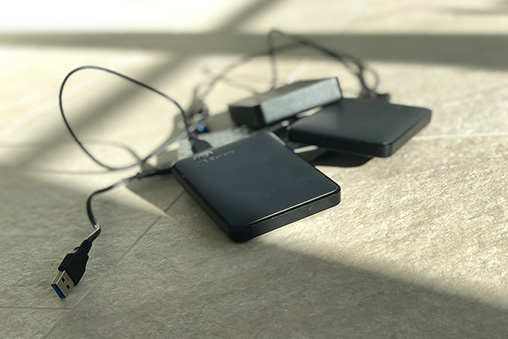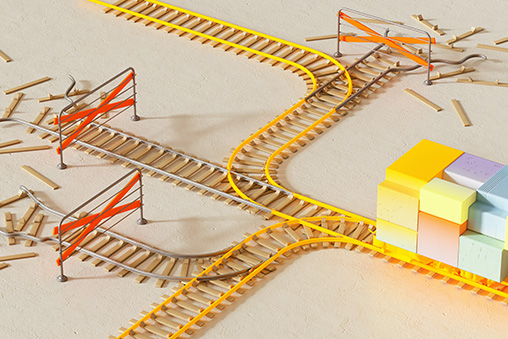Newsletter archive
State of Duplicate Annihilator – part 47
- Improvements to Duplicate Annihilator.
- AI in Photos Finder.
State of Duplicate Annihilator – part 46
- Duplicate Annihilator for Photos v9
- AI Classroom.
State of Duplicate Annihilator – part 45
- GPTEverything.
- AI coming to Duplicate Annihilator and Photos Finder.
State of Duplicate Annihilator – part 44
- Introducing Photos Clicker.
- Improvements to Photos Finder.
- Photos and People
State of Duplicate Annihilator – part 43
- Introducing Photos Finder.
- macOS 13 Ventura feature "Copy Subject" explained.
State of Duplicate Annihilator – part 42
- Photos 8 – how to set up a shared library
State of Duplicate Annihilator – part 41
- New features in Photos 8
State of Duplicate Annihilator – part 40
- Duplicate Annihilator for Photos v8 released
- How to search, filter, suggest and “facet” your search in Photos.
State of Duplicate Annihilator – part 39
- How to work with People/faces?
State of Duplicate Annihilator – part 38
- Metadata, what is it and how do I use and edit it?
State of Duplicate Annihilator – part 37
- Introducing Duplicate Annihilator 7.5.0 including fix for iCloud and missing files.
State of Duplicate Annihilator – part 36
- Introducing Duplicate Annihilator v7 including copy metadata from duplicates to originals.
- Smart albums for missing people no longer working
- Photos 7 and Live Text
State of Duplicate Annihilator – part 35
- Preserve folder and album structure as keywords
State of Duplicate Annihilator – part 34
State of Duplicate Annihilator – part 33
State of Duplicate Annihilator – part 32
State of Duplicate Annihilator – part 31
State of Duplicate Annihilator – part 30
State of Duplicate Annihilator – part 29
State of Duplicate Annihilator – part 28
State of Duplicate Annihilator – part 27
State of Duplicate Annihilator – part 26
State of Duplicate Annihilator – part 25
State of Duplicate Annihilator – part 24
State of Duplicate Annihilator – part 23
- Working with Duplicate Annihilator for Photos – part 3
State of Duplicate Annihilator – part 22
- Working with Duplicate Annihilator for Photos – part 2
State of Duplicate Annihilator – part 21
- macOS 10.5 Catalina, Photos 5 and Duplicate Annihilator v4
- Working with Duplicate Annihilator for Photos – part 1
State of Duplicate Annihilator – part 20
State of Duplicate Annihilator – part 19
State of Duplicate Annihilator – part 18
State of Duplicate Annihilator – part 17
State of Duplicate Annihilator – part 16
- Duplicate Annihilator – HEIC format support
- What is HEIC?
State of Duplicate Annihilator – part 15
State of Duplicate Annihilator – part 14
State of Duplicate Annihilator – part 13
State of Duplicate Annihilator – part 12
State of Duplicate Annihilator – part 11
State of Duplicate Annihilator – part 10
State of Duplicate Annihilator – part 9
State of Duplicate Annihilator – part 8
State of Duplicate Annihilator – part 7
State of Duplicate Annihilator – part 6
State of Duplicate Annihilator – part 5
State of Duplicate Annihilator – part 4
State of Duplicate Annihilator – part 3
State of Duplicate Annihilator – part 2
State of Duplicate Annihilator – part 1
Hi,
My name is Anders and I'm the CEO of Brattoo Propaganda Software. After a break, longer than normal, it is time for another newsletter. This time we’ll focus on the Duplicate Annihilator preferences, something that has been requested for a long time. I hope that you will enjoy it.
A new upcoming application in production
In my last newsletter I told you about an idea of a new application which is essentially a platform for various features requested by customers, and I’m happy to tell you that we have started working on it. So if you have any request for any features that you feel are missing in photos, then let us know and we’ll see what we can do.
Duplicate Annihilator – always updated
Duplicate Annihilator for Photos have had a few fixes and improvements since my last newsletter. It is always a good idea to stay updated and use the latest version. Get it from here https://brattoo.com/#photos
Working with Duplicate Annihilator for Photos – part 3
In the last newsletter we learned everything about how to run Duplicate Annihilator with the default settings just to see what it is actually doing and what all those progress indicators really mean. Now it is time to dig into this a bit deeper, and have a look at the preferences. The preferences can be daunting and most likely you don’t have to touch any of them, but there are some gems there that might be interesting for you. With that said here we go.
The Detection modes
Let’s start with the Detection modes, you find them in the top right corner of the Preferences tab in the Duplicate Annihilator application. The Detection modes decides how Duplicate Annihilator will compare the images when trying to detect duplicates.
First we have Magic mode which tries out different detection algorithms and tries to find a set that suits your duplicates, this mode works for about 95% of our customers. If you shoot photos in burst mode, i.e that you shoot many photos during the same second, then Magic mode can detect those photos that are shot during the same second as duplicates. Some customers like this and some don’t. In any case it is good to know about this. Magic mode can also catch edited versions of the same photo as duplicates.
Then we have Restrictive mode, which is exactly that, restrictive. Restrictive mode will only consider photos that are identical down to the very bit as duplicates. This is the safest but also most restrictive mode.
Perceptive mode is our newest addition to the detection modes and uses our own perceptual detection algorithm. So what does this do? Well, the algorithm tries to analyze the image as the human eye would do, comparing structural data such as relations between different zones in the images, brightness changes and more. This is especially useful if you have used a scanner and scanned a photo twice. When scanning a photo twice you’ll get different metadata and different binary data but they will still look the same and this is where Perceptual mode shines.
Custom mode use is the detection algorithms, that you select in the Detection algoritm section of the preferences.
There is one more thing that differs between those modes. When comparing the photos Duplicate Annihilator needs access to the image files. However if you use a Storage Optimized iCloud library then the actual images files might be located in your iCloud account instead of on your hard drive. Duplicate Annihilator will not be able to access the any images in iCloud. When this happens they will be listed as Missing as described in my last newsletter.
However, since Perceptive mode “looks” at your photos it does not need access to the image files, instead it uses the internal previews generated by the Photos application, and therefore Perceptive mode can find your duplicates even if your photo files are not locally available or offline.
The Detection algorithms
It is unusual, but sometimes you might want to run Duplicate Annihilator in Custom mode and then you need to decide which Detection algorithms that should be used. When running in Custom mode all selected Detection algorithms need to match between images for them to be considered duplicates.
The SHA1 checksum could be described as a digital fingerprint that is calculated based on the binary data of the actual images file. False duplicates are highly unlikely to occur when using the SHA1 checksum. This is also the Detection algorithm that Restrictive mode uses.
Creation date is the date and time when the file was created. This can be the same date and time as when the photo was taken but it doesn’t have to be.
Exif creation date is that date and time stored by the camera within the meta data section of the image file when the photo was taken.
Then we have the First X characters in the filename detection algorithm. Looking for duplicates by looking at filenames is really a quite bad way to detect duplicates but it is there if you need it.
Width, Height and File size are easy to understand what they do, they simply compare the width, height and size of the image file.
The Actions
So when Duplicate Annihilator detects something we want it to do something about it, this is when the Actions settings decides what should happen. Duplicate Annihilator simply marks its findings in Photos either by setting the Description/Comment field of the images to something, by assigning a keyword, or by adding the detected image to an album. You decide which you prefer by selecting it in the “Mark by” popup box at the very top of the Actions pane.
Then it is time to select what Duplicate Annihilator should mark, and with what. Duplicates are always marked, that can’t be unselected. You can set Duplicate Annihilator to also mark Originals, Thumbnails, Missing images, Corrupt images and Faces. You can read about what those are in my last newsletter. The checkbox before each option decides if you want to mark your photos with that or not. The textfield for each option decides what you want to mark them with, it will be the value of the Comments/Description field, the name of the keyword or the name of the album they are assigned to.
If you decide to set the Description/Comments field you also have the option to append previous existing comments instead of replacing them. This can be useful if you use the Comments/Description field for the things. You also have the option to clear the Comments/Descriptions filed for all images where “all” means all photos that are being scanned by Duplicate Annihilator. If you use a selection only that selection will be affected.
The Thumbnails
The Thumbnail settings define what is considered to be a thumbnail. Detecting thumbnails was a big deal in iPhoto which could import its own internal thumbnails as regular photos. With Photos this really isn’t much of problem anymore but it can be useful if you want to detect small low resolution images in your library.
Finally, we have two more settings worth mention. First we have the Enable “slow mode” setting which can be useful on older versions of Photos where Photos could run out of application memory. Then we have the Keep HEIC as original instead of JPEG setting. There are several reasons why you might like to keep HEIC over JPEG, you can read all about it in a past newsletter.
There is more
Next time I will try to cover some features and practices that can be useful when hunting down those duplicates.
This newsletter and previous letters
Several of our readers have requested that we resend previous emails so that they could catch up on earlier tips and information. All previous emails are available online in our Newsletter section at https://newsletter.brattoo.com
The free apps section
As I have mentioned in previous letters we have received requests on how to automate some tasks in Apple Photos or tasks related to photos. Those tasks might be tedious to work out manually but are easy for us to solve. The apps include a tool to set the Photos Titles based on filename (with or without file extension), a tool to copy and apply GPS coordinates between photos and finally a utility to set the correct file dates on image files based on the photo date stored in the metadata within the image files. You’ll find all our free apps at https://free.brattoo.com.
Upgrades
Finally I would just like to tell you that our upgrade discount for Duplicate Annihilator for Photos is still available. For only $4.95 you can upgrade any old Duplicate Annihilator license to Duplicate Annihilator for Photos and for just two dollars($2.00) more you can upgrade any old Duplicate Annihilator license to the Duplicate Annihilator Toolbox including a family pack! This means that you get five licenses for you and your family for all versions of Duplicate Annihilator including iPhoto, Aperture, iOS and Photos for only $6.95.
Get the upgrade from: https://upgrade.brattoo.com
Thank you for your time, I hope that you found this email informative. If you have any feedback, suggestions, questions or ideas then please reply to this email. I read all emails and reply to them in person.
Best Regards,
Anders, CEO and Founder, Brattoo Propaganda Software
Duplicate Annihilator

Duplicate Annihilator is one of the oldest and most competent duplicate detection softwares for photos on the market. It's available for Photos, iPhoto, Aperture and iOS.
Photos Finder

Are your photos scattered everywhere and getting them into one Photos Library might seem like an impossible task. Photos Finder makes this task as simple as the click of a button.
Free software

They say there is no such thing as a free lunch but we have free apps. Built for our customers, based on personal requests and completely free of charge. Bon appétit!
Support

Sometimes everything seems to complex and daunting but everyone needs a little help now and then or at least a nudge in the right direction to get back on track. This is where you find it.
- © Untitled
- Design: HTML5 UP